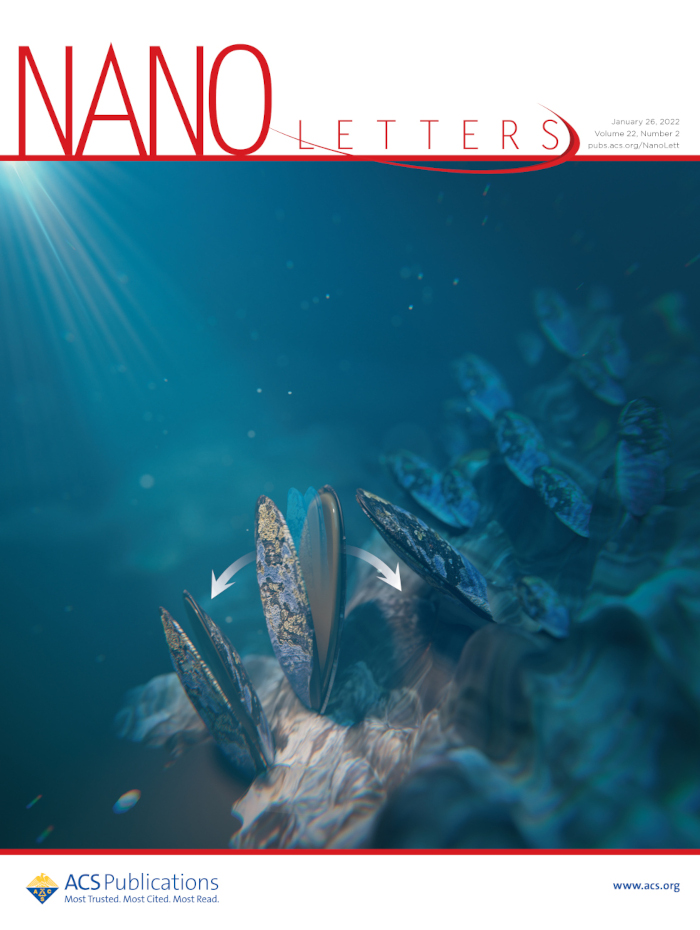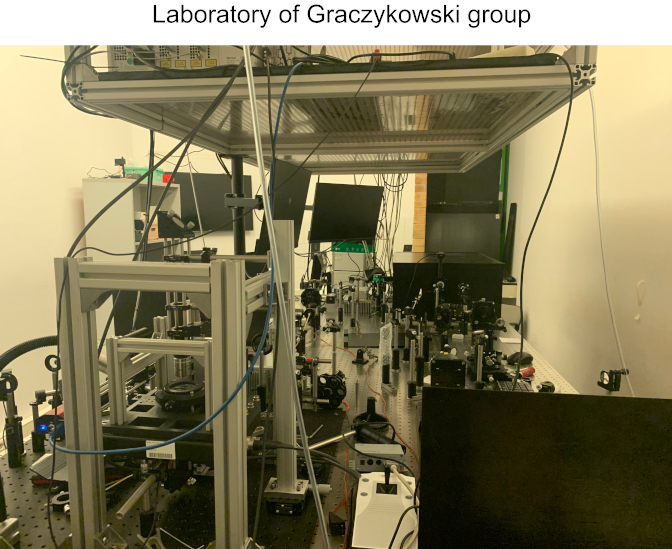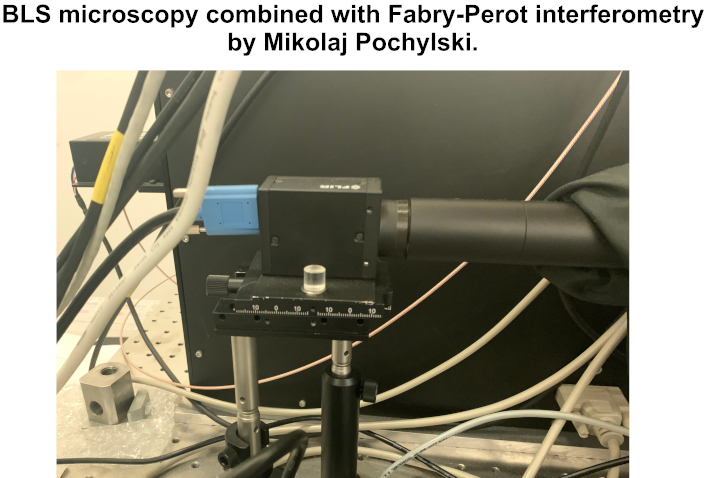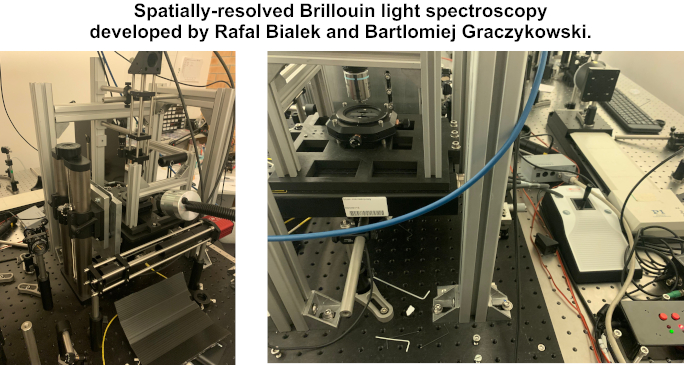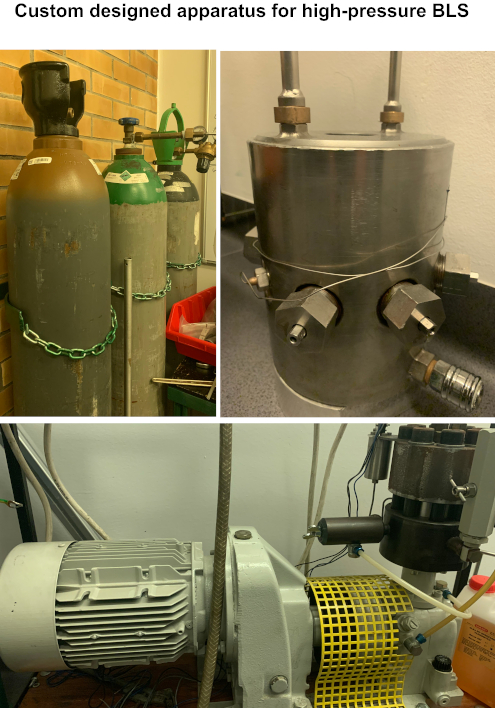Our research interests include
-
Colloidal plasmonic supercrystals are promising nano- and meta-materials for photocatalysts, single-molecule sensors and various optoelectronic devices. However, their performance is largely based on their mechanical and thermal properties. Using Brillouin light spectroscopy, we study the confined acoustic vibrations of gold nanoparticles and derive their mechanical properties. Our research is focused on the effect of laser irradiation on contact-strength and spatial ordering. This work is a collaboration with the group of Wiktor Lewandowski in the Faculty of Chemistry, University of Warsaw.
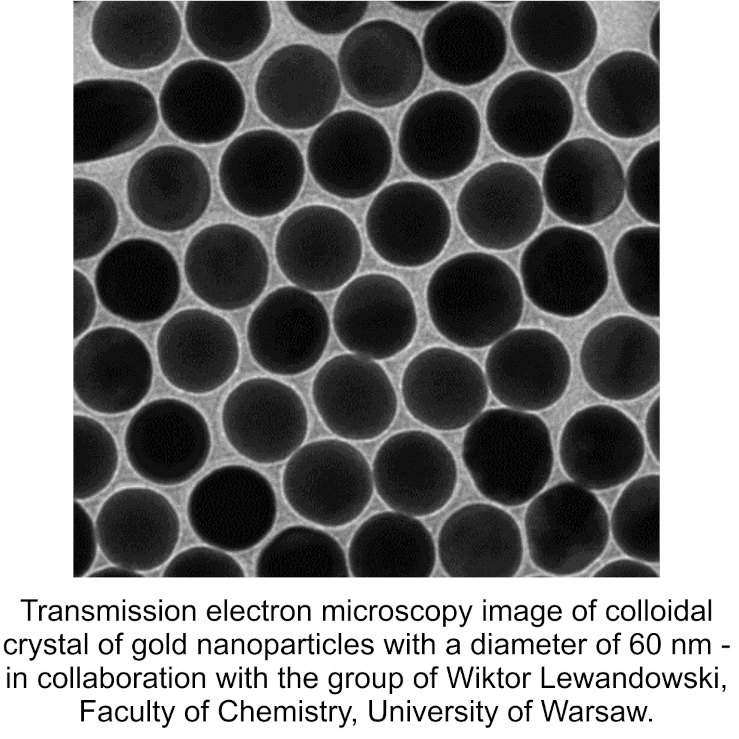
-
We study the effect of plasmonic coupling on optomechanics with Brillouin Light Spectroscopy (BLS) in metal nanorod-polymer nanocomposites. The intensity of the light inelastically scattered on thermal phonons captured by BLS is strongly affected by the wavelength of the probing light. Our experimental results – supported by detailed optomechanical calculations – pave the way for establishing BLS as an optomechanical probe of plasmons and promote nanorod-soft matter nano-composites for acousto-plasmonic applications. This work is a collaboration with the groups of Prof. Shu Yang (University of Pennsylvania), Prof. George Fytas (Max Planck for Polymer Research in Mainz), and Prof. Bahram Djafari Rouhani (University of Lille).
This work is currently in peer-review.

-
An exciting challenge in nanotechnology is to find nanomaterials that convert light into motion, in order to construct nanorobots, artificial muscles, and various types of nano- and micro-actuators. The group of Bartlomiej Graczykowski has encountered and studied, for the first time, light-to-motion conversion in nanomembranes of polydopamine – a bioinspired polymer with numerous applications.
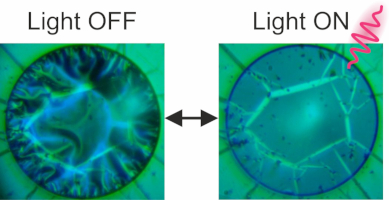
For more information see: Nano Lett. 2022, 22, 2, 578–585. (https://doi.org/10.1021/acs.nanolett.1c03165)
-
Telecommunication devices exploit hypersonic acoustic waves to mediate signal processing with microwave radiation and electrical currents in various microelectronic components. We have recently developed a technique, termed pumped Brillouin light scattering, which can reveal potential interactions of hypersound with charges through frequency- and momentum-resolved studies of acoustic phonons. We continuously work on the development of this all-optical method, explaining the underlying microscopic mechanisms, and applying to various types of nanomaterials.
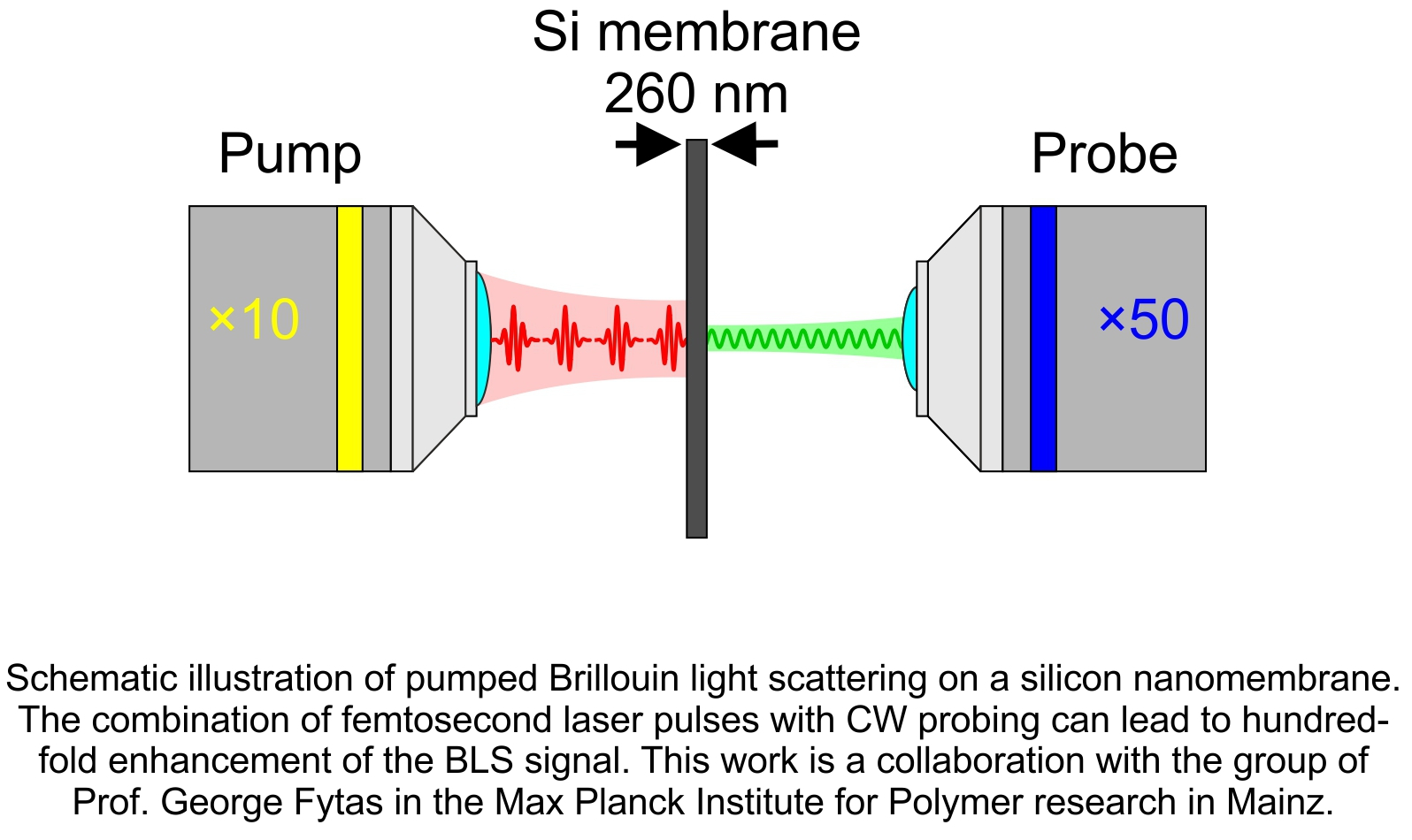
For more information see: Science Advances, 2020, 6(51), eabd4540. (https://doi.org/10.1126/sciadv.abd4540)
